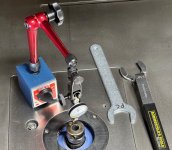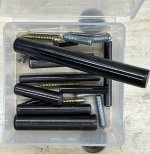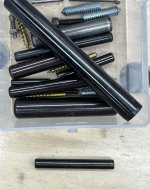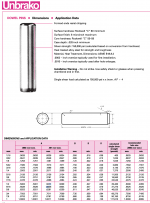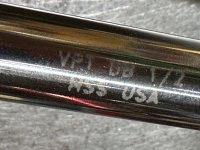Michael Kellough
Member
- Joined
- Jan 23, 2007
- Messages
- 7,096
How much is typical? How much is too much?
I’ve never measured runout before, just going by perceived vibration.
If it seems like too much I rotate the bit and check again.
Usually vibration can be reduced to a tolerable level this way.
I’m evaluating a new router motor to maybe replace an old PC 7518. The new motor has some nice features like soft start and continuous variable speed and it uses ER 20 collets. The downside is my Eliminator chuck won’t fit.
But the new router seemed to have runout I could detect with my finger tip in the spindle taper.
To make a more objective assessment I secured the motor and set up a dial test indicator.
Bottom of taper = .00075”
Middle of taper = .00125”
Near top of taper = .0015”
A fat thousandth of an inch isn’t much but it’s about ten times more than I would expect on the spindle. But I’ve never measured a router spin before but that is more than I want on my drill press. I thought a short router spindle would be tighter than that. Am I expecting too much?
I’ve never measured runout before, just going by perceived vibration.
If it seems like too much I rotate the bit and check again.
Usually vibration can be reduced to a tolerable level this way.
I’m evaluating a new router motor to maybe replace an old PC 7518. The new motor has some nice features like soft start and continuous variable speed and it uses ER 20 collets. The downside is my Eliminator chuck won’t fit.
But the new router seemed to have runout I could detect with my finger tip in the spindle taper.
To make a more objective assessment I secured the motor and set up a dial test indicator.
Bottom of taper = .00075”
Middle of taper = .00125”
Near top of taper = .0015”
A fat thousandth of an inch isn’t much but it’s about ten times more than I would expect on the spindle. But I’ve never measured a router spin before but that is more than I want on my drill press. I thought a short router spindle would be tighter than that. Am I expecting too much?

